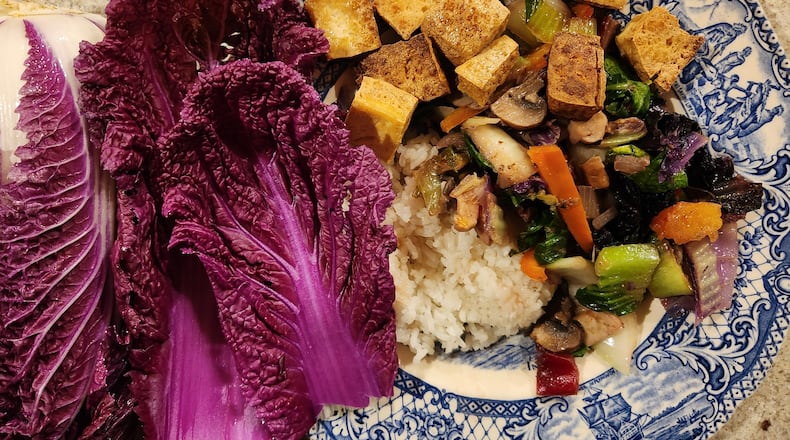Chinese cabbage is much more nutritious than our Western variety. And even more nutritious than the vitamin-rich broccoli I described last week.
The origin of most produce is vague, often in the distant past. For example, green Napa cabbage was first domesticated in China in the 14th century, spread to Korea and Japan in the 1850s, and brought to the United States in the 1880s by Chinese immigrants.
In contrast, red Napa cabbage is a recent invention. It was developed only 6 years ago by the Kwonnong Seed Company in South Korea.
Napa cabbage is best known as the base for kimchi, which is considered South Korea’s national dish. Kimchi is made from Napa cabbage, radish, ginger, garlic, ground hot chile peppers, and cucumber or scallions, and is generally available in grocery stores including MOON Co-op.
Red Napa is much less common than green Napa cabbage. The coloring in the red variety is due to anthocyanins, which boost immunity even more than the already powerful green varieties.
Like green Napa cabbage, red Napa has tight compact leaves. The stems of the leaves are smooth and crunchy and transition into large crinkled ruffled bright magenta leaves.
Since its appearance at the Oxford Farmers Market a few weeks ago, I have made extensive use of red Napa cabbage, both raw and cooked. Raw, it is serving as the base in our daily salad, when local lettuce is hard to find and less inviting.
I tear the leaves away from the stems and shred them. The bright red color is especially appealing in a salad. Save the stems for stir-fry.
Treat the raw leaves like lettuce. Add other seasonal novelty items. Local carrots, radishes, and peppers are available at the Oxford Farmers Market. Dress the salad with a mix of olive oil and vinegar.
To cook the Napa cabbage, I separate the leaves from the stems. Chop the stems and tear the leaves.
For a stir-fry, the trick is to chop or cut up all ingredients in advance and add them to the frying pan or wok in sequence, depending on the amount of time needed to cook.
Start with the protein, be it chicken, beef, or tofu. When the protein is cooked, add chopped garlic and onions. Then vegetables needing some time, like the Napa stems. Finally, the leafy produce.
When the stir-fry is cooked, I add Kentuckyaki, a teriyaki sauce fermented in used bourbon barrels in Kentucky, available at MOON Co-op.
Red Napa cabbage is very hard to find in the United States. We are fortunate to have 7 Wonders Farm growing it for us in Oxford.
MOON Co-op is Oxford’s consumer-owned full-service grocery, featuring natural, local, organic, sustainable, and Earth-friendly products. The store, located at 516 S. Locust St. in Oxford, is open to the public every day. Check it out at www.mooncoop.coop.
About the Author
